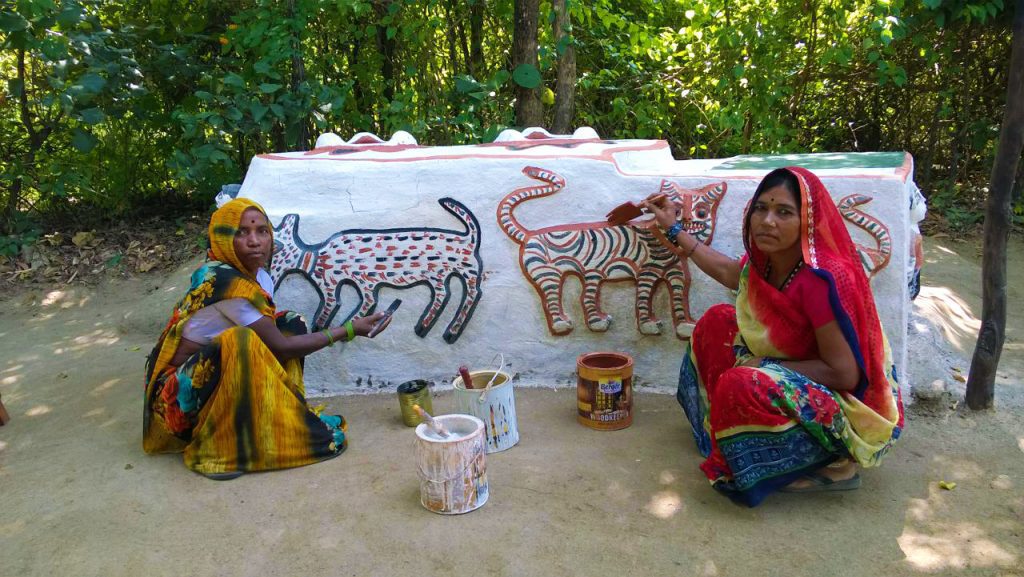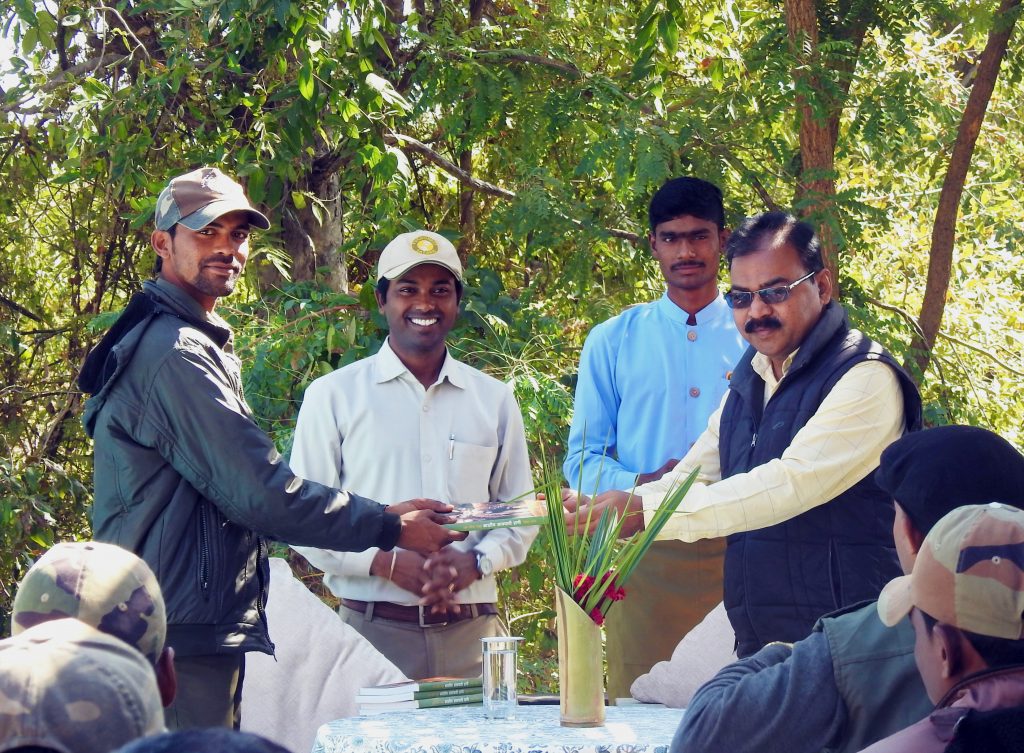Pench National Park, a lesser-known park still brings humans into close contact with wildlife as it reveals the childhood story of Jungle book by the famous scribbliest, Rudyard Kipling. The dry mixed forest is nestled in the southern Satpura-Maikal ranges of Central highlands and straddles on the borders of the two states, Madhya Pradesh and Maharashtra.
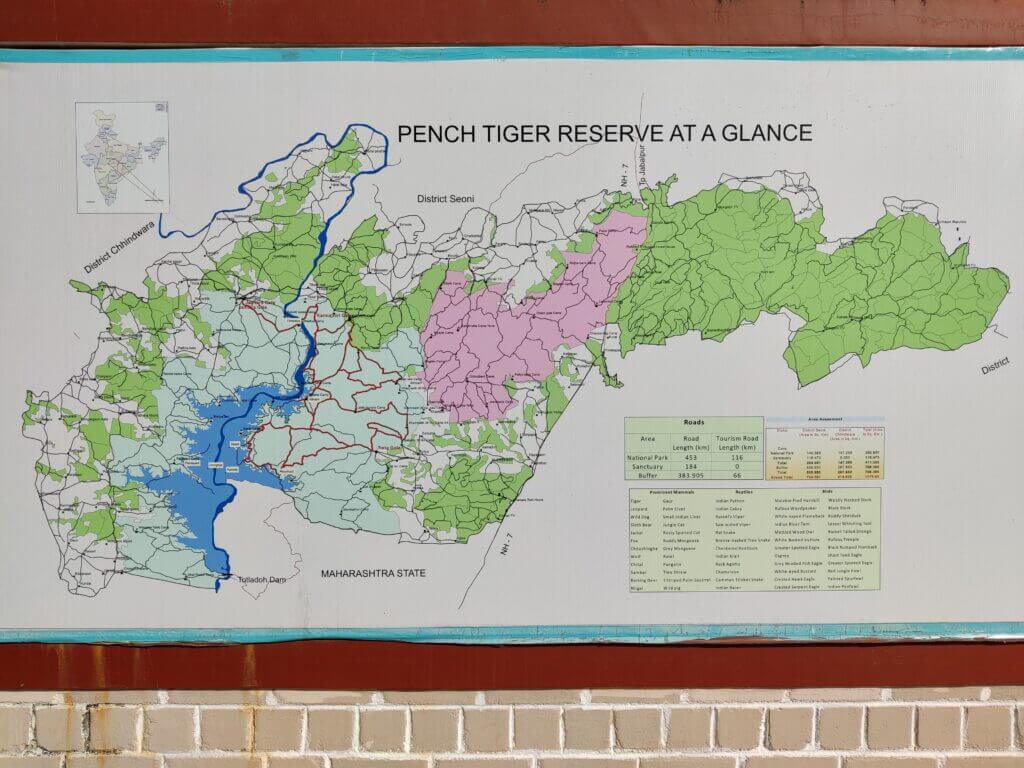
The area marked in Green is Buffer Forest, an area with Pink is Pench Mowgli Sanctuary, and an area with Pista Colour is Core Zone.
The hydroelectric Totladoh Dam constructed on the Pench river from 1973 to 1988, became the first interstate project of Madhya Pradesh and Maharashtra and resulted in the submergence of about 72 sq. Km of an area, out of which 54 sq km is in Pench National Park M.P & the rest lies towards Maharashtra.
Pench Tiger Reserve comprises “Indira Priyadarshini Pench National Park, Pench Mowgli Sanctuary, and the buffer forest.
History of Pench National Park
| 1977 Declared as Pench Sanctuary (449.392 sq km) | |
| 1983 Declared as Pench National Park (292.857 sq km) out of which 118.473 sq km of an area remained as a sanctuary. | |
| 1992 Included in Project Tiger bt NTCA as the 19th Project Tiger Reserve. | |
| 2002 National Park was renamed as “Indira Priyadarshini Pench National Park” and Sanctuary was named as “Pench Mowgli Sanctuary” | |
| 2007 Areas of National Park and Sanctuary submerged into the Core of Pench Tiger Reserve. |
GENERAL INFORMATION ON PENCH TIGER RESERVE
Core: 411.330 Sq Km (Out of which 20% of core is open for Tourism)
Buffer Zone: 768.302 Sq Km
Total: 1179.632 Sq Km
Also Read: How to reach Pench National Park
1. Core Zones of Pench
The Core zone of Pench has three gates: Turia gate, Karmajheri gate, and Jamtara gate. The Core area on Maharashtra is around 257sq km and officially became Tiger Reserve in 1999. Maharashtra side of Pench also has a few gates, with Sillari and Khursapar being well-known with tourists. Other Gates are Saleghat, Kolitmara, Chorbahuli and Surewani.
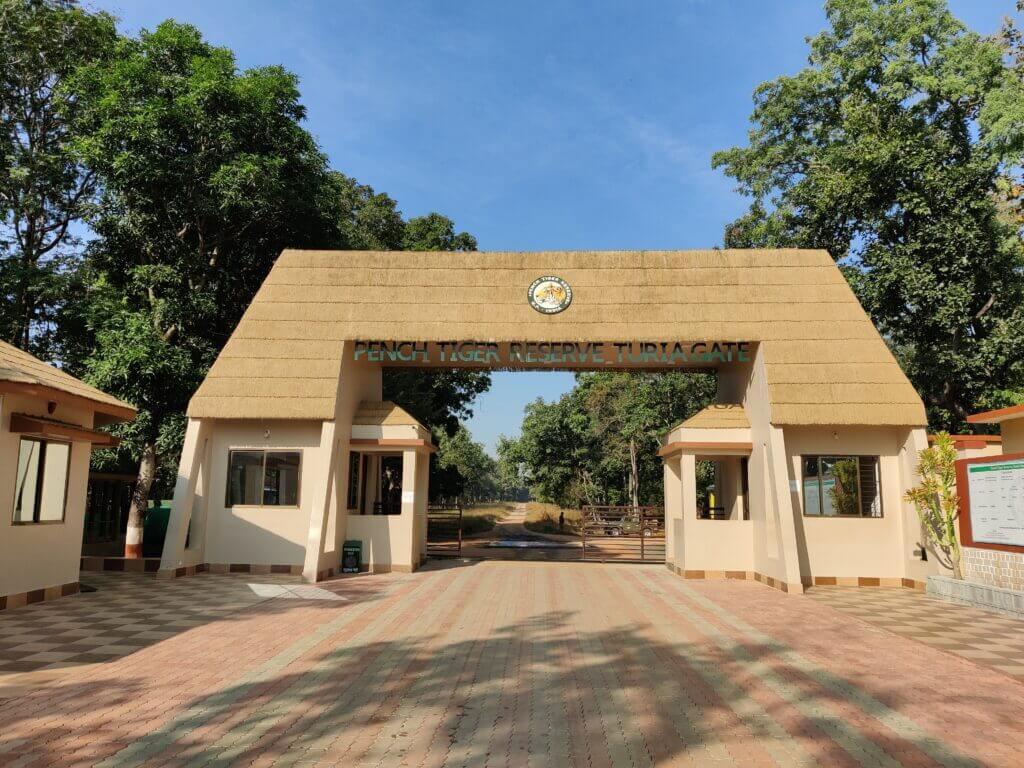
Turia Gate: This gate lies almost on the border of Madhya Pradesh and Maharashtra and is extremely busy owing to its distance being the closest to NH 7. This part of the forest consists of mixed vegetation, scrublands, small streams and is dominated by Acacia Catechu which takes you towards a very famous Baginnalla waterhole.
If one takes the route going towards Baginalla and moving towards JodaMunara there are good chances of sighting Patdev Tigress who has had a total of 5 cubs this year. The other road of the park divides up and takes you towards the Junewani waterhole and from there the terrain starts to climb up which goes up Pyorthadi.
The area is known for its dynamic views of rocks, surrounded by the gigantic Ghost Trees and sparkling Salai Trees. This area is known for its leopard sightings.
Also Read: Birds In Pench National Park
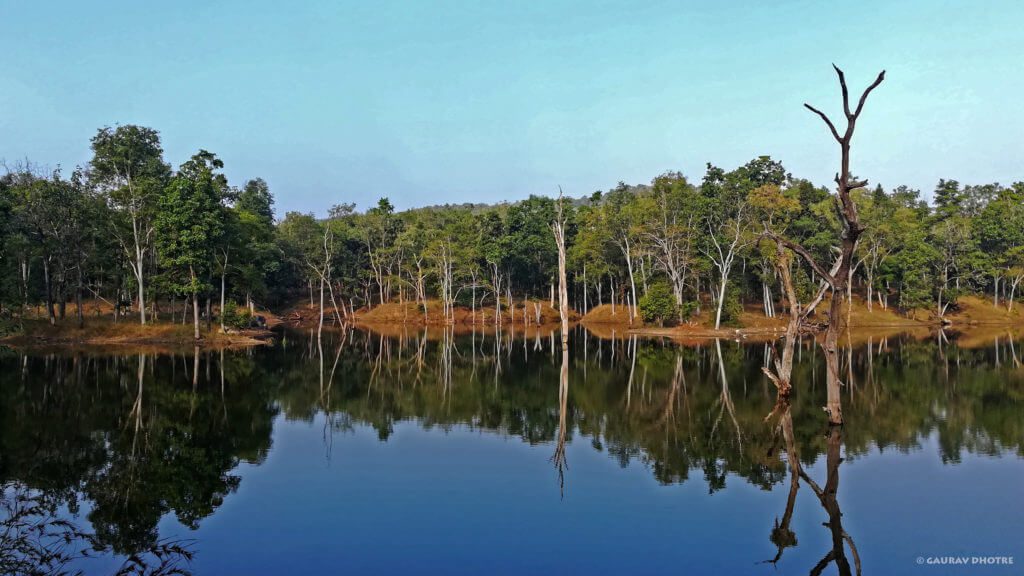
The famous Junewani Waterhole is a picturesque water body with dead trees and their reflection falling perfectly in the calm water. Behind is the highest point of Pench called KalaPahad.
The central area of the park is quite open and encroached with the undergrowth of lantana. A healthy population of the chital (Spotted Deers), jackals, and beautiful winged gems can become a sight for visitors. And majorly this area is reigned by the legendary tigress Collarwali Tigress, for which people across the world come to see a glimpse of her.
Karmajheri Gate: This gate is less busy and with limited accommodation options around it, Pench Tree Lodge – Pench being one of them. Forest rest houses are also located at this gate. This part of the forest is majorly covered with Teak Trees, as most of the area before becoming a tiger reserve was used for timber production.
From the first junction, the left road leads towards Bodhanalla ( Bodha means male Gaur and nalla means stream in the local language of Gond tribes) which is covered with Bamboo plantations, known to sight Gaurs, Sambars and if you are very lucky then you might come across with barking deer.
The road leading towards Sita Ghat goes parallel to Pench river, known for its enormous species of birds. During summertime one might find a tiger resting in a pool of water as the river dries up. This area of the park is good for finding Wild Dogs.
Also Read: Best places to see tigers in India
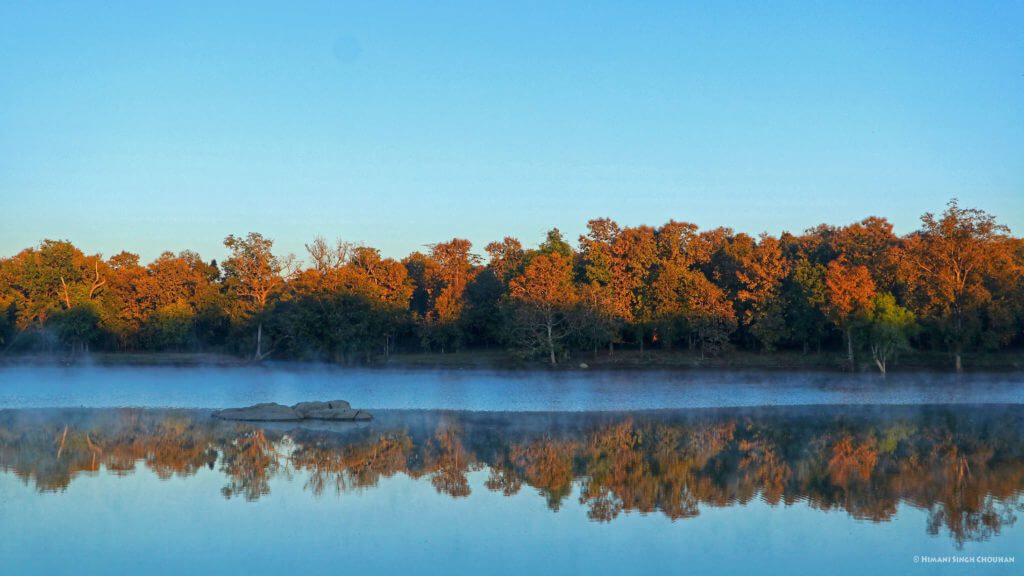
The center area of the park which is also the territory of legendary tigress Collarwali can be accessed by both the above gates.
Khursapar Gate: This gate is located 12kms from Turia Gate. It has become popular in recent years due to good tiger sightings. The terrain here is undulating with good sightings of Chowsingha, Chinkara, and Gaurs. There are few natural water bodies in this zone, Bakhari lake being one of them.
Sillari Gate: This is the famous and the main gate for Pench Maharashtra. Sillari is located around 40kms from Turia gate. Sillari has a beautiful forest with dense Bamboo and Teak, with a lot of water bodies and waterfalls. One can even see the Totlah Doh Dam build on the Pench River. This part of the forest has good sightings of Wild Dogs and Sloth Bear.
Jamtara Gate: This is the third gate of the park and offers a limited area of the park to explore. One has the option of crossing over to other zones from Chendia ghat when the river is dry and reaching the breakfast point of Alikatta. The road toward Tikari and the area is less explored. This area has Banyan Trees, Shindoori, Camel foot climbers. It is also known for Sloth Bear sightings.
Pench Mowgli Sanctuary is not open to Tourism.
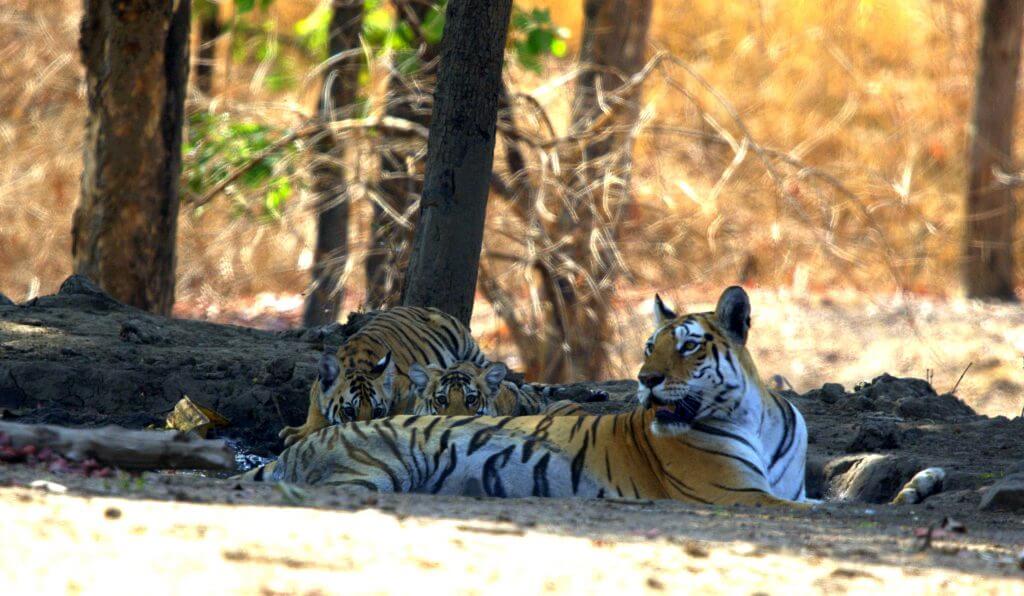
Buffer Zones of Pench
A buffer area of the park is also rich in flora and fauna.
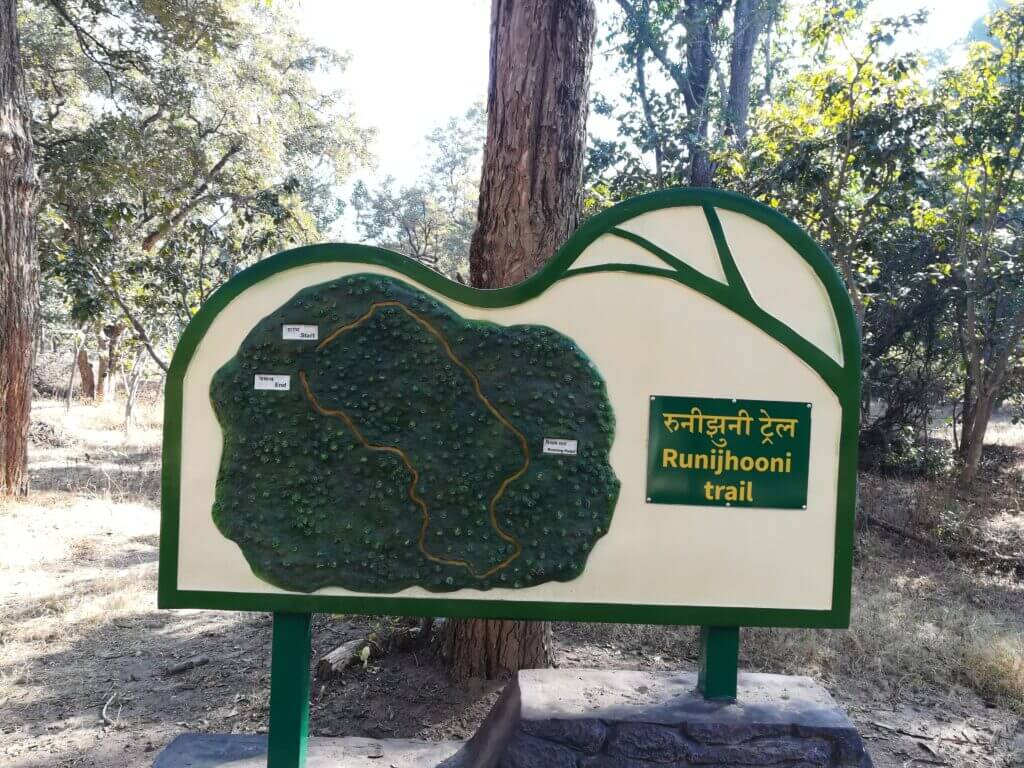
Runi- Jhooni Trail: Guests who are interested to experience the jungle on foot can take this trail. It’s a walking trail of 3kms with the core zone of the park on one side. One can see the tracks and signs left by animals and offers a good opportunity to do birding. Sometimes you get to hear warning calls of animals and can also chance upon a sighting or two. Entry to this trail is from Karmajheri Gate.
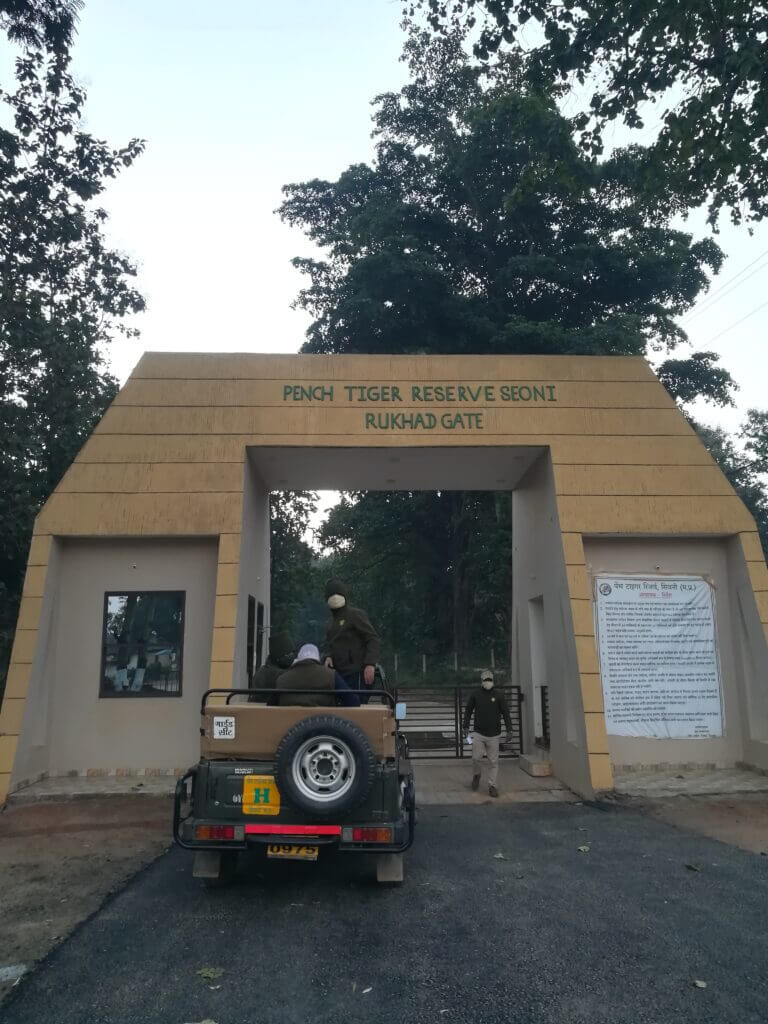
Rukhad buffer: As this area is in the hilly region the vegetation here is moist. With lots of Bamboo, Jamun, Arjun Trees, flowing streams, and lots of butterflies. Rukhad is also a crucial Tiger corridor for Pench and Kanha. After the construction of the newly elevated highway with several animal crossings designed between this corridor, Tiger sightings have increased in Rukhad.
This might have happened because of animals using the underpasses made for them. Rukhad is a dense forest with dense undergrowth, this makes tigers inside the park walk on vehicle dirt roads. There are three dominant male tigers, Kingfisher Male – is known for hugging the trees and marking his territory.
The other two are Kuraigad Male – Kuraigad is the small fort having the vantage point of the valley and Sambhaji Male one of the biggest but shy males. There are a few tigresses also in the area – Masumnala female, Sakata Female, and Daldalli Female.
Other than doing a tiger safari here. Guests also have the option to cycle or do a night safari in this buffer. This is better suited when one is staying near the Karmajhiri gate. Rukhad Gate has located 30 km from Pench Tree Lodge..
Khawasa buffer: This buffer is also known as the Wolf Sanctuary and one can experience a night safari in this area. The area is mostly open wooded forest which is preferred by animals like wolves, foxes, porcupines, and Owls. This buffer can be approached easily when one is staying towards the Turia gate.
Teliya Buffer: Known for its wolf sighting, this new buffer zone is hailed for its Black Panther/ Melanistic Leopard sightings. Besides Leopard, teliya buffer offers wonderful sightings of Barking Deer, Chowsingha, and Blue-Bull Antelope. One can easily access Teliya as it is 4 km away from Turiya Gate and 11 km away from Khawasa Buffer Gate.
Recently there was a sighting of a black leopard cub less than one-month-old, if you want to know more about black leopards in India click here to know more.
And while you quench your thirst for sighting the myriad wonders that Pench National Park has to offer, Pench Tree Lodge is a great option to add to the ongoing adventure.
Pench Tree Lodge offers a luxurious resort in Pench National Park in the jungle with 06 spacious cottages on the ground and 06 tree houses perched on top of the Mahua trees that are supported by stilts. Large French windows allow for an uninterrupted view of the deciduous forest and grassland and let you observe the multitude of birds, butterflies, and wild animals at the lodge.
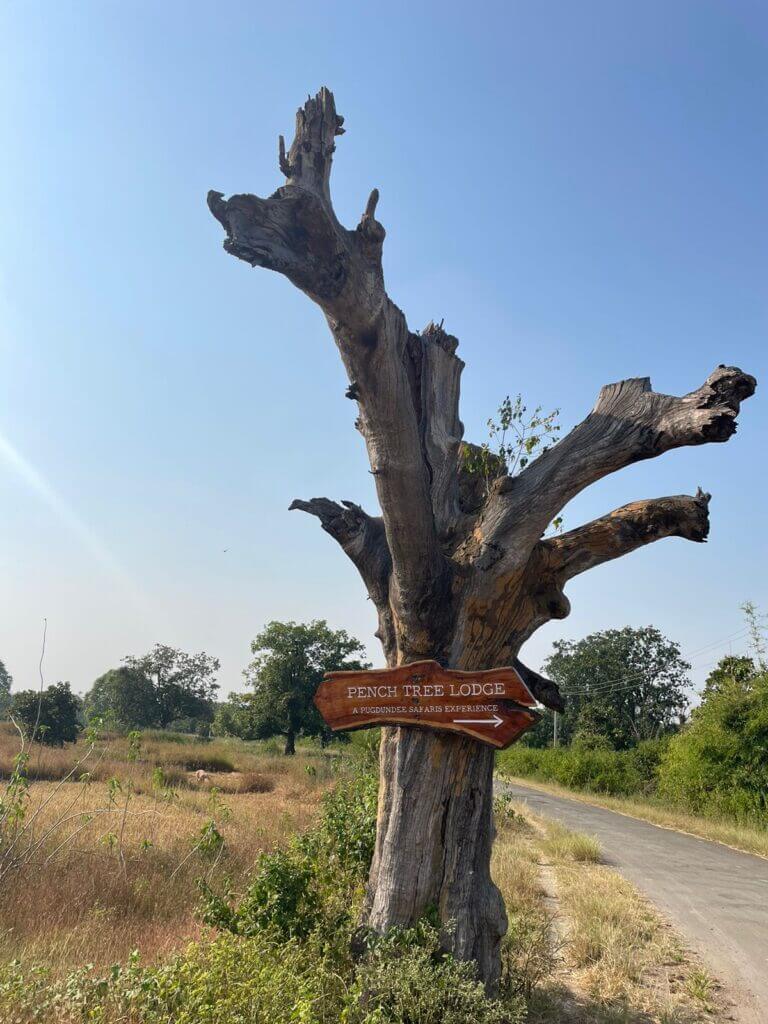
Contributed by: Himani Chouhan, Gaurav D. and Natasha Sinha


